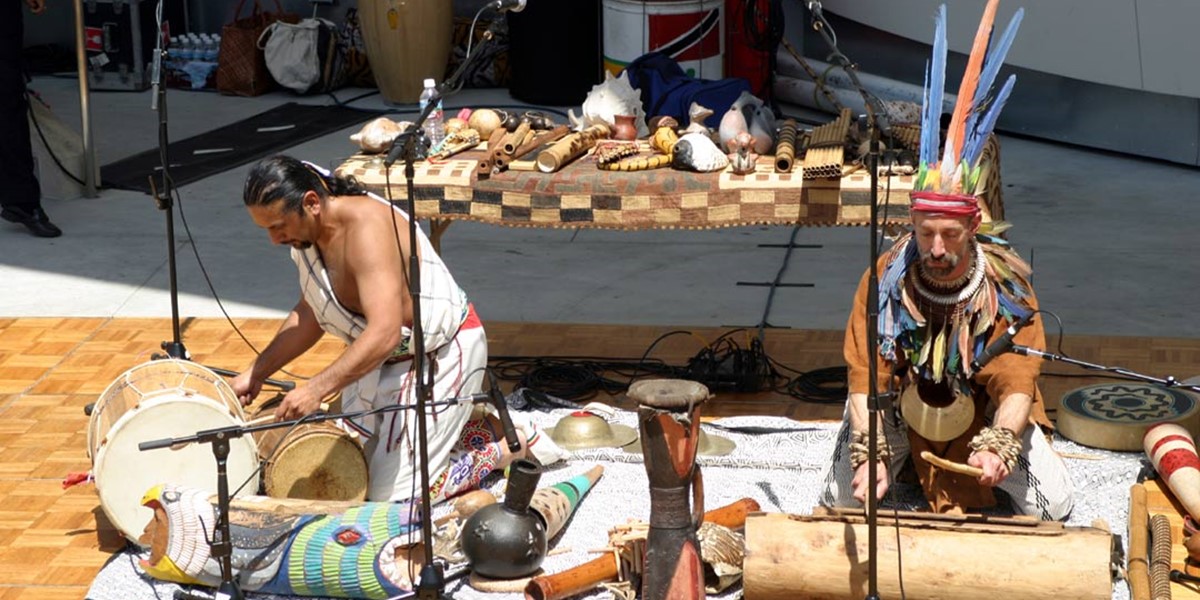Tuesday, September 28, 2021
Xochimoki: Curating The Aztec Audio Revival
By Chris Moss
Jim Berenholz and Mazatl Galindo speak to Chris Moss about their 40-year-long mission to reanimate the lost sounds and instruments of ancient Mesoamerica

Xochimoki, live at the Los Angeles Music Center, 2015

Register now to continue reading

Thanks for visiting the Songlines website, your guide to an extraordinary world of music and culture. Sign up for a free account now to enjoy:
- Free access to 2 subscriber-only articles and album reviews every month
- Unlimited access to our news and awards pages
- Our regular email newsletters

